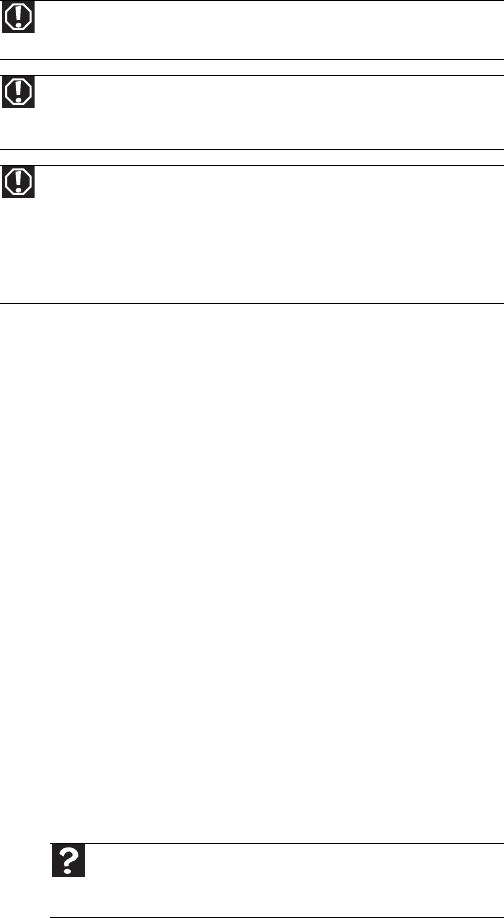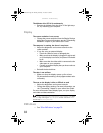
CHAPTER 6: Troubleshooting
78
Safety guidelines
While troubleshooting your computer, follow these safety
guidelines:
First steps
If you have problems with your computer, try these things
first:
• Make sure that the power cord is connected to your
computer and an AC power outlet and that the power
outlet is supplying power.
• If you use a power strip or surge protector, make sure
that it is turned on.
• If a peripheral device does not work, make sure that all
connections are secure.
• Make sure that your hard drive is not full.
• If an error message appears on the screen, write down
the exact message. The message may help Customer
Care in diagnosing and fixing the problem.
• If you added or removed peripheral devices, review the
installation procedures you performed and make sure
that you followed each instruction.
• If an error occurs in a program, see the program’s
printed documentation or the online help.
Warning
Never open your computer case while your computer is turned on and
while the modem cable, network cable, and power cord are connected.
Warning
Make sure that you are correctly grounded before accessing internal
components. For more information about preventing damage from static
electricity, see “Preventing static electricity discharge” on page 36.
Warning
To avoid bodily injury, do not attempt to troubleshoot your computer
problem if:
•Power cords or plugs are damaged
• Liquid has been spilled into your computer
• Your computer was dropped
•The case was damaged
Instead, unplug your computer and contact a qualified computer technician.
Help
For more information about troubleshooting, click Start, then
click Help and Support. Type the keyword/phrase troubleshooting
in the Search Help box, then press E
NTER.
8512243.book Page 78 Monday, February 12, 2007 4:35 PM


















